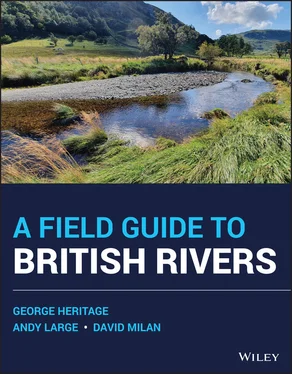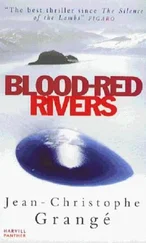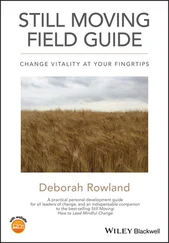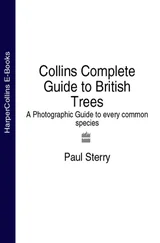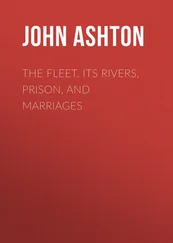2.3.2 Process‐Based Classification of Montgomery and Buffington (1997)
The 1997 classification identifies eight functional river types based on discriminatory values of degree of confinement, system gradient, bedform types and spacing, bed material, reactivity, and sediment source and storage character ( Table 2.1). It should be noted that the channel types and control variable limits defined in both Montgomery and Buffington and in Leopold and Wolman (above) are by no means universal, and this is illustrated in Table 2.2which summarises several other typologies developed for alluvial channels.

Figure 2.1 River types on the sediment supply continuum.

Figure 2.2 Channel type change with river gradient, sedimentology, and discharge
( Source: Based on Leopold and Wolman (1957). © John Wiley & Sons).
Table 2.1 River types identified by Montgomery and Buffington (1997) along with their key attributes.
Source: Modified from Montgomery and Buffington (1997). © John Wiley & Sons.
| Attribute |
Channel type |
| Braided |
Regime |
Pool‐riffle |
Plane‐bed |
Step‐pool |
Cascade |
Bedrock |
Colluvial |
| Typical bed material |
Variable |
Sand |
Gravel |
Gravel cobble |
Cobble boulder |
Boulder |
n/a |
Variable |
| Bedform pattern |
Lateral oscillation |
Multi layered |
Lateral oscillation |
None |
Vertical oscillation |
None |
|
Variable |
| Reach type |
Response |
Response |
Response |
Response |
Transport |
Transport |
Transport |
Source |
| Dominant roughness elements |
Bedforms (bars, pools) |
Sinuosity bedforms (dunes, ripples, bars) Banks |
Bedforms (bars, pools) Grains Large wood Sinuosity Banks |
Grains, Banks |
Bedforms (steps, pools) Grains Large wood Banks |
Grains Banks |
Boundaries (bed, banks) |
Grains Large wood |
| Dominant sediment sources |
Fluvial Bank failure Debris flows |
Fluvial Bank failure Inactive channel |
Fluvial Bank failure Inactive channel Debris flows |
Fluvial Bank failure Debris flows |
Fluvial, Hillslope Debris flows |
Fluvial Hillslope Debris flows |
Fluvial Hillslope Debris flows |
Hillslope Debris flows |
| Sediment storage elements |
Overbank bedforms |
Overbank bedforms inactive channel |
Overbank bedforms inactive channel |
Overbank inactive channel |
Bedforms |
Lee and stoss sides of obstructions |
|
Bed |
| Typical slope |
<0.03 |
<0.001 |
0.001> <0.02 |
0.001> <0.03 |
0.03> <0.08 |
0.08> <0.3 |
Variable |
>0.2 |
| Typical confinement |
Unconfined |
Unconfined |
Unconfined |
Variable |
Confined |
Confined |
Confined |
Confined |
| Pool spacing(channel widths) |
Variable |
5–7 |
5–7 |
none |
1–4 |
<1 |
Variable |
Variable |
Table 2.2 Additional river types to those listed in Table 2.1, with channel slope as a discriminator.
| Reference |
Pool |
Glide |
Riffle |
Rapid |
Cascade |
| Bisson et al. (1988) |
|
|
S < 0.04 |
S > 0.04 |
S > 0.04 S < 0.16 |
| Sullivan (1986) |
S < 0.01 |
S > 0.01 S < 0.02 |
S > 0.01 S < 0.04 |
S > 0.04 |
S ~ 0.068 |
| Grant et al. (1990) |
S ~ 0.005 |
S < 0.02 |
S ~ 0.011 |
S ~ 0.029 |
S ~ 0.055 |
| Wood‐Smith and Buffington (1996) |
Closed topographic depression |
|
S > 0.02 S < 0.04 |
|
S > 0.04 |
| Montgomery and Buffington (1997) |
S ~ 0.012 |
S > 0.0015 S < 0.04 |
|
S > 0.02 S < 0.076 |
S ~ 0.11 |

Figure 2.3 The River Styles typology
( Source: Based on Brierley and Fryirs (2005). © John Wiley & Sons).
2.3.3 River Styles Framework
The River Styles framework (Brierley and Fryirs 2005) develops a more holistic view of fluvial systems, providing a geomorphic template upon which biophysical processes are assessed within a catchment context. The River Styles methodology reflects both river character and behaviour. As such the framework also provides a basis for assessing geomorphic river condition and recovery potential, framed in terms of evolutionary pathways for each channel type. The River Styles typology is summarised in Figure 2.3.
2.3.4 Extended River Typology
The Extended River Typology developed by Rinaldi et al. (2015) identified 22 morphological types ( Figure 2.4) classified by confinement (confined, partly confined, and unconfined), dominant bed material calibre (bedrock, boulder, cobble, gravel, sand, and silt), and planform (straight‐sinuous, meandering, pseudo‐meandering, wandering, braided, island‐braided, and anabranching).
2.3.5 Scottish Environment Protection Agency (SEPA) Classification
As mentioned above, SEPA (2012) proposed a river classification system for Scottish rivers based on and developing the Montgomery and Buffington (1997) typology. Twelve channel systems have been distinguished by SEPA, and these have been amalgamated into six functional channel types distinguished based on their geology (bedrock or alluvial), slope, and gross sinuosity ( Table 2.3). The SEPA hierarchical classification provides a useful summary of the character of each river type proposed ( Table 2.4).
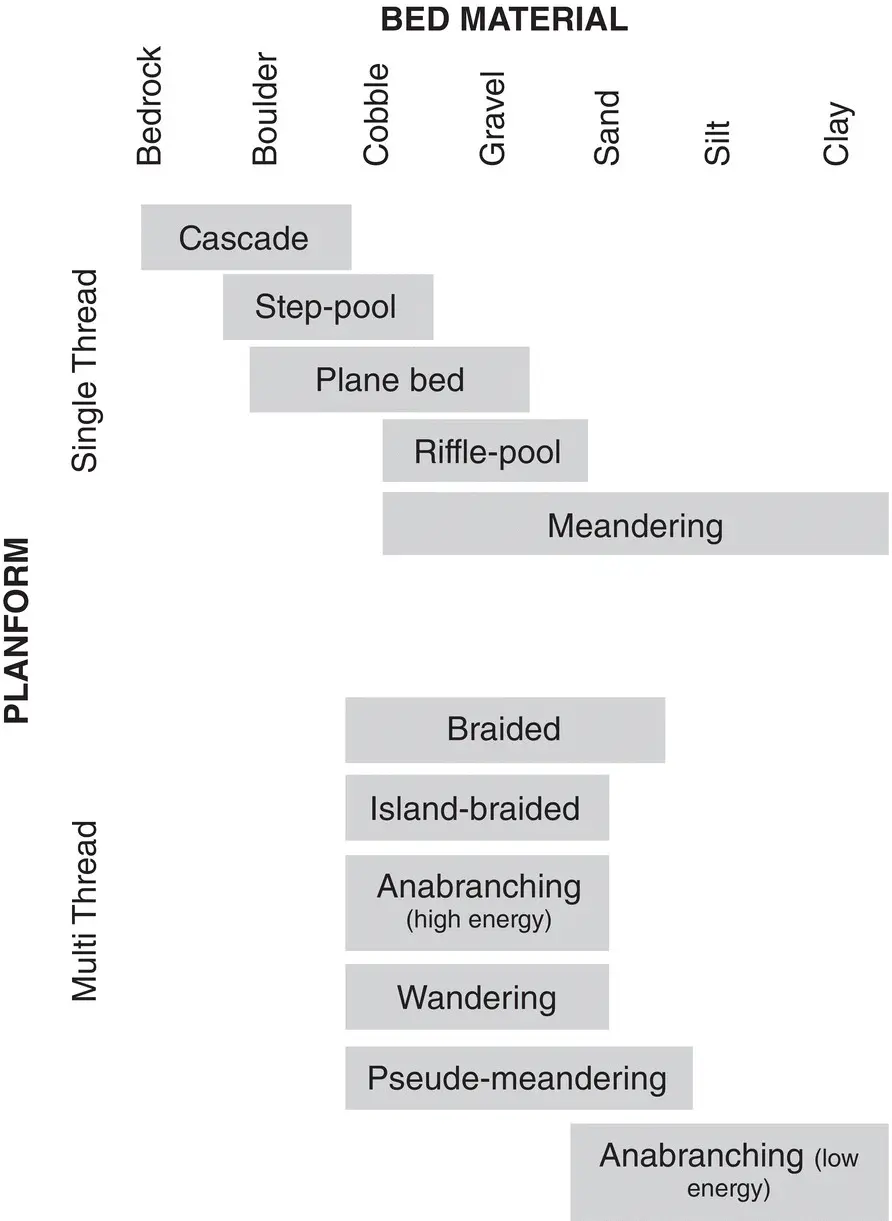
Figure 2.4 The Extended River typology
( Source: Modified from Rinaldi et al. (2015). © John Wiley & Sons).
2.4 River Classification Framework Used in This Book
It is clear from the short review above that there is little consensus regarding a robust typology for fluvial systems. This situation reflects the difficulty in classifying across a continuum from bedrock to alluvial forms, each influenced by a spatially and temporally variable set of controlling parameters. The result is that each published classification throws up issues when used as a general tool for determining a river type. The work of Leopold and Wolman (1957), for instance, concentrated only on a relatively narrow range of low to moderate energy alluvial systems, so failing to cover steep upland channel types, whereas Montgomery and Buffington (1997) and SEPA (2012) do extend their typology to steep channels and to channels where bedrock dominates over alluvium.
Читать дальше
